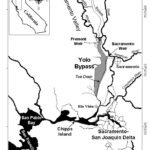
Click to enlarge map.
On Wednesday I rode the train across the Yolo Bypass, which provides a glimpse of the Inland Sea that once regularly inundated the lowlands of the Central Valley
The bypass comprises 70,000 acres of farmland and wildlife areas that has been intentionally managed as a designated flood basin since 1926 when the Sacramento Weir was completed. California’s state capitol, Sacramento, could not exist without the Yolo Bypass. The bypass diverts floodwaters away from Sacramento and toward undeveloped farmlands.
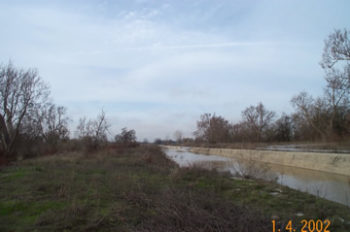
Fremont Weir is a simple concrete structure that is 1.8 miles long and about 6 feet high. Note the linear concrete structure that runs from the lower left into the center of the photo.
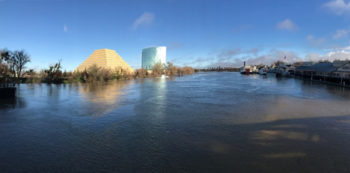
The Sacramento River at the I-Street Bridge. | John Cain
When flows in the lower Sacramento River exceed about 65,000 cubic feet per second (cfs), they begin to spill over Fremont Weir and into the Yolo Bypass.
Water from both the Sacramento and American Rivers can also enter the Yolo Bypass via the Sacramento weir that is opened less often.
Releasing water into the bypass prevents flood stages from rising above the levees that protect Sacramento. During extreme floods, the Yolo Bypass carries five times as much flood water as the Sacramento River channel itself. Today the river is flowing at approximately 93,000 cfs at the I-Street Bridge (see photo below) while approximately 210,000 is flowing through the Yolo Bypass.
Even though the Yolo Bypass looks surprisingly full, it is only carrying about 40 percent of its total capacity. By contrast, the Sacramento River is at about 85 percent of its 110,000 cfs capacity. The National Weather Service is predicting another atmospheric river storm for next week. Thanks to the capacity of the Yolo Bypass, Sacramento will not be at risk unless the next storm is truly torrential and thanks to the new state flood plan, the bypass will someday be expanded to make sure Sacramento is protected against a changing climate.
To the south where the San Joaquin River enters the Delta, we are not as well prepared. Another big storm next week could be a big problem. Pay attention to the forecast and tune in to learn more about American Rivers’ efforts to build a new bypass on the lower San Joaquin River.




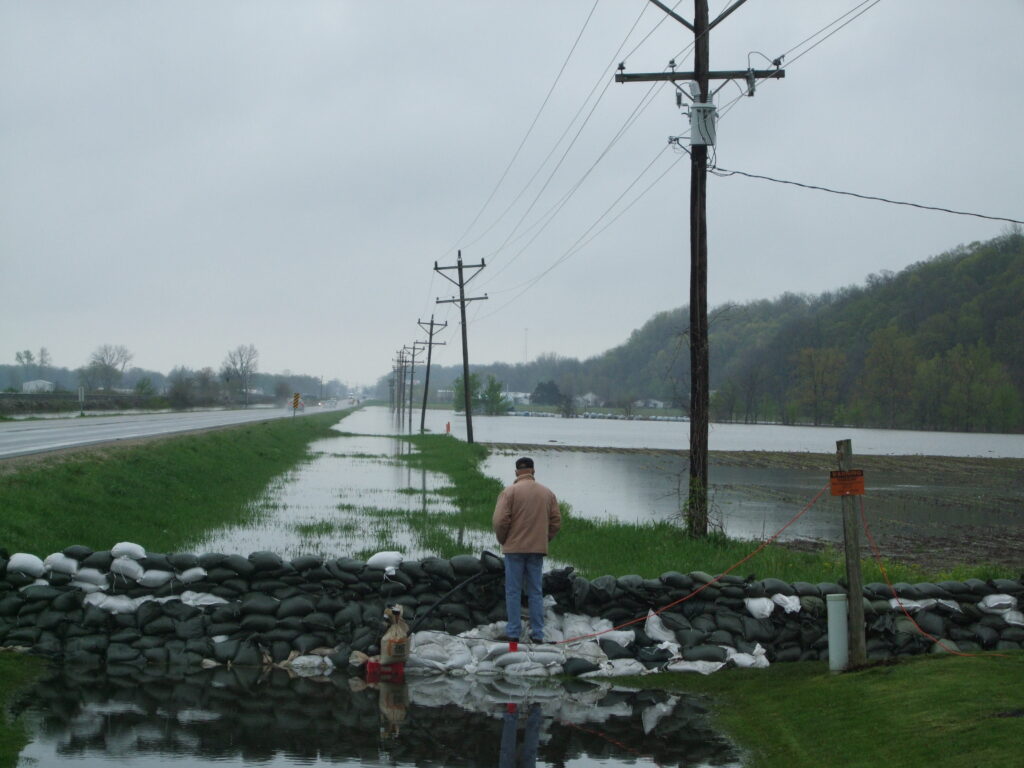
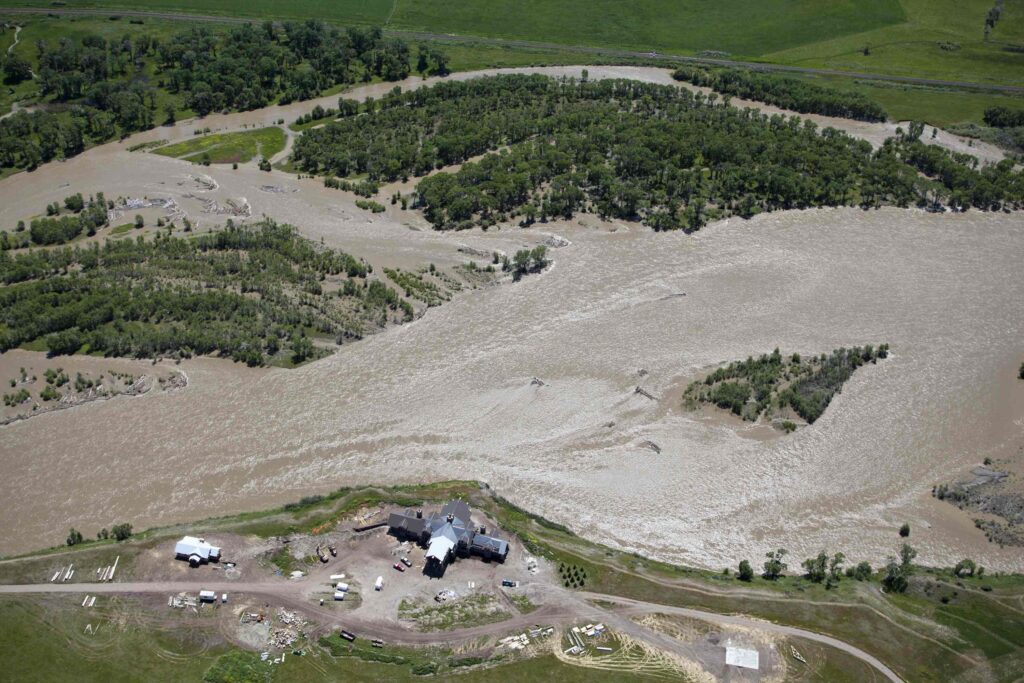
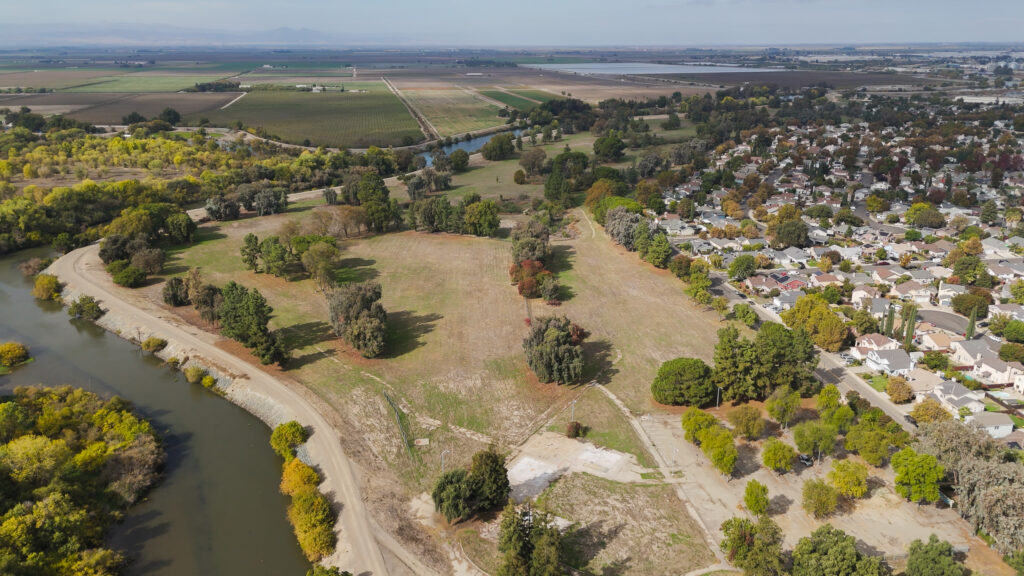
1 response to “Multi-benefit flood management exemplified by Yolo Bypass”
Hi, John
Thanks for the Yolo Bypass squib. I assume you’ve read Robert Kelley’s marvelous ‘Battling the Inland Sea’ http://www.ucpress.edu/book.php?isbn=9780520214286 which captures the 60-year-long debate over how best to protect Sacramento and other development within the Sacramento Valley. It’s important to note that the Yolo Bypass that you see today is not the Yolo Bypass that was conceived 100+ years ago. I can recall, as a young CA Dept. of Fish & Game headquarters biologist nearly sixty years ago our Wildlife Branch chief __ (rats, can’t recall his name but oh, my he was volatile in a good, conservation way) fuming over limitations the Bypass landowners exercised though the easements they had granted (as in sold to) the State Reclamation Board. We talked in those days about the ‘A though L’ easements – something like that, each one having been negotiated by the Reclamation Board as the landowners threw up yet another impediment to flood management. The land was still privately owned then and the owners wanted to get as much private use out of the farmland as possible, yielding the field only when the threat of Sacramento flooding was imminent. Our Wildlife Chief wanted just as much ponding as possible – if a crop had been drowned he’d rather it be used as migratory waterfowl succor, while the landowners would prefer to dry the area out and salvage what use they could of it. The landowners regularly sued the State for their crop losses. I wasn’t directly involved in these matters – I simply had an open-area desk near the Wildlife Chief’s office and he would rail at me if I was the only one around. It’s my sense that ownership control of Yolo Bypass lands has gradually moved from private to public hands. But, oh my, it took a long time for that broader public conservation interest in the Bypass to be acknowledged and secured by public officials.